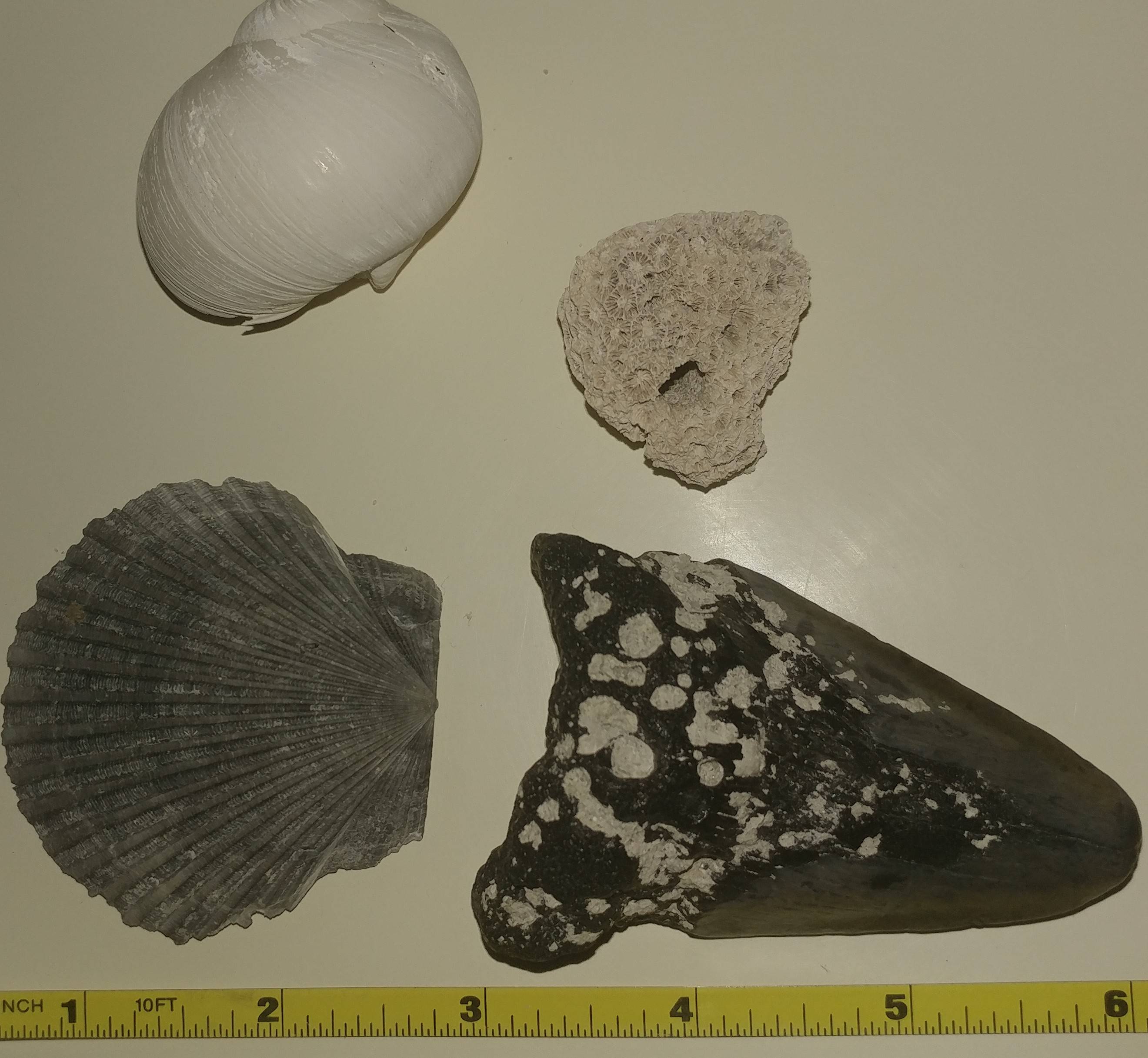 This is a picture of some specimens that I found while digging a pond. I'm 30 miles from the coast in Wilmington, North Carolina and dug down about nine feet past the blue clay and hit a layer of seashells.
This is a picture of some specimens that I found while digging a pond. I'm 30 miles from the coast in Wilmington, North Carolina and dug down about nine feet past the blue clay and hit a layer of seashells.
-
3$\begingroup$ This Wikipedia page might interest you. $\endgroup$– canadianerCommented Aug 9, 2019 at 4:27
-
$\begingroup$ this is probably a better fit for the earth science stack, since this is really a question about stratigraphy. $\endgroup$– JohnCommented Oct 25 at 1:04
1 Answer
I'm not familiar with the area at all, but it looks like Wilmington is one of the coastal cities in southern North Carolina (NC):
Image attribution: Rcsprinter123, CC BY 3.0 https://creativecommons.org/licenses/by/3.0, via Wikimedia Commons
As NC seems to be basically a highland of the Piedmont and Appalachian ranges caused by a geologic fault line with a slope towards the coast followed by lowland flat areas, what you are likely seeing here is remnants of a historical sea-level change.
There's what seems to be a good summary of the geologic history at North Carolina Seagrant University, from which I take the following.
About 200 million years ago, the Atlantic ocean started to form of the Eastern coast of the USA and deposited marine sediments that vary in depth from a few feet (~1-2 m) deep to about 10,000 thousand feet (~3,000 m) deep at Cape Hatteras on the Outer Banks. Since then the land has risen and fallen a few times, resulting in quite a range of environments, from terrestrial to marine and back again. These should all be represented in the rocks below you by the fossils present.
The rocks will range from hard sandstones and mudstones in the deeper parts to quite soft friable sediment in the shallower bits. The clay overlaying will be alluvial/fluvial deposits since the most recent sea level dropped or the land rose in relatively recent times.
You are seeing some of these historical sediments. As you are only about 30 miles (50 km) inland and the terrain seems to be fairly flat, the sediments will be quite deep below you. The ones on the top will be the more recent ones and might be quite soft in terms of rock that they are in. They should all be fossil bearing if they are oceanic sediments, as yours seem to be.
I can see remnants of some type of mollusc (a snail) in the top, followed by some what is probably coral on the right. You also have a one half of a scallop shell (these are bivalves, so one top and one bottom shell. The top half of the shell is usually the flat one. You also have a shark tooth. Given the size of the shark tooth, I suspect that it is from Otodus megalodon, the giant well known "Megalodon" shark which was the subject of the dramatic movie The Meg.
As this species of shark lived between 4 and 23 million years ago, that gives you some indication of the age of the sediments in which you are digging.

